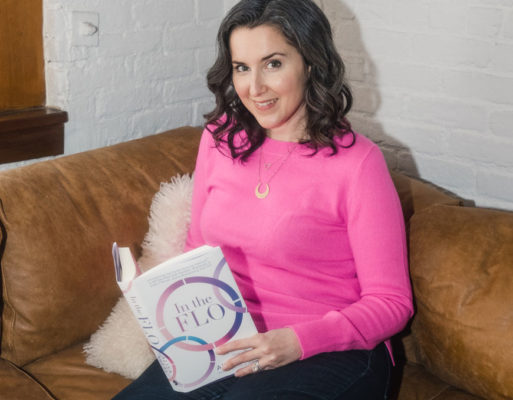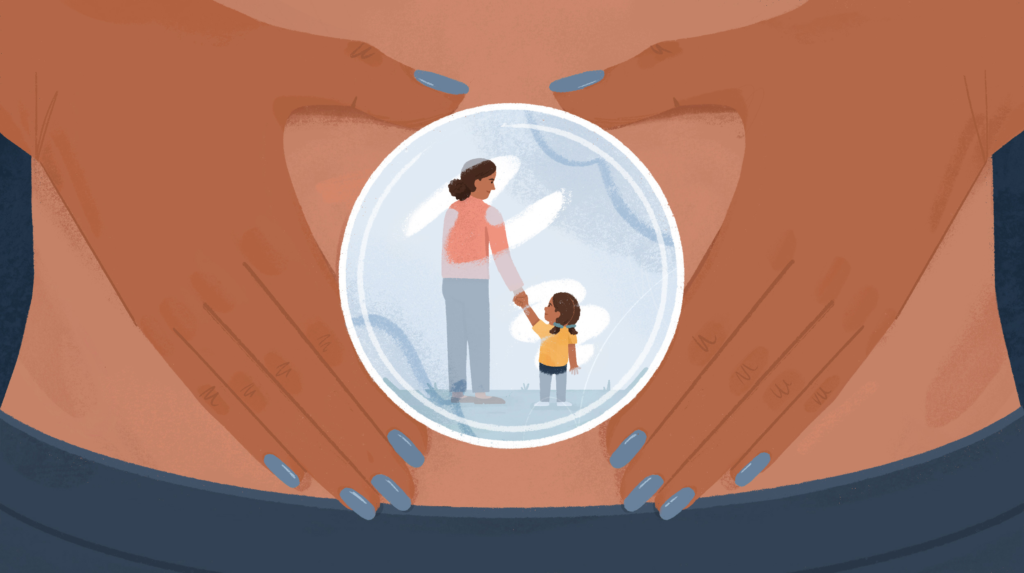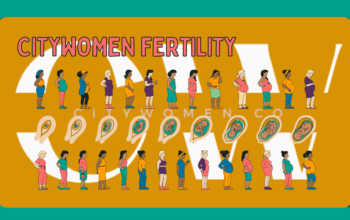
January 28, 2020 at 09:30PM by CWC
Annie Tomlin: This book introduces a concept called the infradian rhythm. What is that, in a nutshell?
Alisa Vitti: There are many different biological rhythms. We have the circadian rhythm, which is something that we experience in the course of 24 hours. We have the ultradian rhythm, which are things that we experience that are shorter than a 24-hour period. And we have the infradian rhythms, which are cycles that are longer than 24 hour period—and for women, we experience it in our monthly cycle most noticeably, and it turns out that it affects key systems of the body.
“Our hormones are a powerful gift.” —Alisa Vitti
Annie Tomlin: Why haven’t we heard about it already?
Alisa Vitti: There are a few reasons. First, research in medicine, fitness, and nutrition has historically focused on male biology. Female biology is being overlooked. Also, chronobiology is still a relatively young field; people are just now understanding that there is something called a circadian rhythm and that it needs to be supported with lifestyle adjustments. Third, in our culture, we have a history of not giving a name to female biological experiences, so we tend to have a lack of vocabulary to describe our biological reality.
ADVERTISEMENT
ADVERTISEMENTKate Spade Autumn/Winter Sale |
Annie Tomlin: So, is the infradian rhythm the same as our monthly cycle?
Alisa Vitti: Not exactly. It’s one of the ways that we experience it, but it is just one aspect of the rhythm. What is so important is for women to understand that with this infradian rhythm, we have to understand how to stop disrupting it. Otherwise, it has negative effects on six systems: the brain, the microbiome, the metabolism, the stress response system, the immune system, and the reproductive systems. When we optimize and care for the infradian rhythm—just like when you start to take care of your circadian rhythm—you have more energy, you get better sleep, and your body functions the way that it should.

Annie Tomlin: Does this apply only to adult women? Or is it for all females of all stages of life?
Alisa Vitti: The infradian rhythm is active from puberty to menopause—only about four decades, and that’s why it’s so precious. Because the degree to which you support and align with your infradian rhythm will dramatically impact the quality of your health and life both while it’s active and post menopausally. While it’s active, you have access to all of this amazing fluctuating creative, productive, inventive energy to apply to all these different major life areas.
Annie Tomlin: What sort of research led you to this concept?
Alisa Vitti: Almost 20 years of taking care of women: looking at their hormonal issues and writing WomanCode, which looked at the root causes of endocrine disruption. I said to myself, “Well, there’s got to be a deeper reason behind this epidemic of women with hormonal problems.” Over 50% of women are struggling with hormonal issues; fertility issues and period disorders are on the rise. Why is this happening? Aside from the endocrine disruption, what else has been overlooked?
I’m a researcher. I think it’s important for us to have the facts because we have a whole cultural narrative that says being female and having the biological impetus to be dynamic or fluctuating is somehow a liability. That’s toxic propaganda based on completely inaccurate science. The truth is, women have an extremely complex, efficient, powerful system from your brain to your ovaries. This intriguing rhythm predictably creates a dynamic shifting energy within your body—and that is such a gift.
“Women have an extremely complex, efficient, powerful system from your brain to your ovaries.” —Alisa Vitti
Annie Tomlin: Can you walk me through the cycle syncing method?
Alisa Vitti: The cycle syncing method is the practice I created to help myself and women live in alignment with our infradian rhythm. It’s really simple and logical—and most importantly, based on your biology! You have four predictable hormonal phases in one month. You change what you eat and change which workouts you do to match the metabolic and cortisol changes you experience each month. You also organize your day-to-day tasks to be in optimal alignment with neurohormonal focus that are present in each phase.
Annie Tomlin: What kind of changes do people see from doing this?
Alisa Vitti: One way to describe it is in the inverse—that while you’re living in a continuous state of infradian disruption, you feel drained at the end of every day, and that feeling gets particularly worse in the second half of your cycle. After months, you can develop an actual hormonal imbalance. You never feel as clear-headed as you want to be. That becomes your norm. But once you start aligning these basic self-care practices, the energy gain is dramatic. By supporting the infradian rhythm, you boost energy, reduce cortisol levels, keep blood sugar stable, promote efficient detoxification and a balanced microbiome, nourish proper hormone levels, and promote cognitive health. It’s the most elegant and efficient way to care for yourself in your reproductive years.
“The story we tell about female hormones is a villainous one.” —Alisa Vitti
Annie Tomlin: It’s interesting that you bring up energy. So many women, especially young women, are eating well and exercising—but they still complain of feeling spent.
ADVERTISEMENT
ADVERTISEMENTSports Direct Free Delivery on All Orders! |
Alisa Vitti: Ignoring our infradian rhythm leads to big-time burnout. For example, your metabolism is slower in one half of your cycle and faster in another half of your cycle. So the the very idea that you would have one way of eating, one combination of macronutrients, every day throughout the month is completely illogical in the light of the scientific reality of your metabolic shift.
Again, this comes back to cultural conditioning. For people who have male hormones, their hormonal pattern does follow circadian timing. Eating and exercising the same way every day does optimize their hormonal biological rhythms. From a female-hormone point of view, eating the same way every day of the month makes you perform suboptimally. And then women blame themselves that they haven’t tried hard enough to “stick with it,” but it’s not them—it’s that they are following guidance meant for a different biological rhythm!
Annie Tomlin: What do you wish more people knew about female hormones in general?
Alisa Vitti: Women are taught that we can’t trust ourselves because of our hormonal fluctuations. The story we tell about female hormones is a villainous one. But this book extols the virtuous story of what I think we should be telling ourselves around our biology and our hormones and our infradian rhythm—that the key to your well-being is not what you’re doing so much as when you’re doing it. Our hormones are a powerful gift.
More from Alisa Vitti: Learn how to biohack your orgasms, then learn how to stop hormonal breakouts before they start.
Author Annie Tomlin | Well and Good
Selected by CWC

ADVERTISEMENT
ADVERTISEMENTUp to 30% off Gift Sets |







